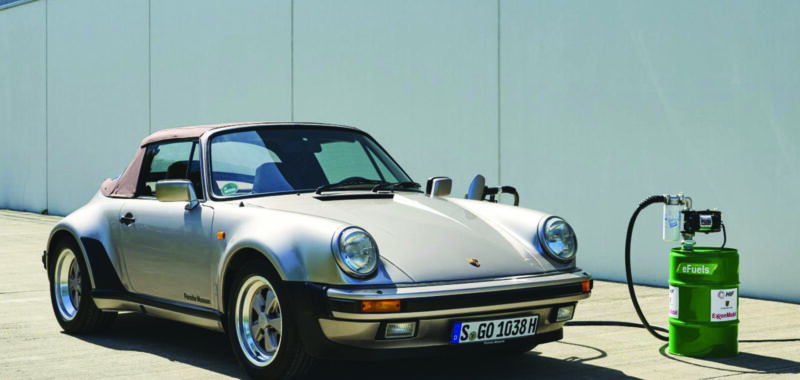There’s also the argument that e-fuels aren’t all that efficient in use. According to Enerdata, vehicles using e-fuels have an energy efficiency measuring 4-5 times lower than battery electric cars.
Pros of e-fuels
There are a few positives to e-fuels.
Some argue that e-fuels are a cleaner source of energy compared to petrol and diesel due to the methods that can be used to produce them. Electricity required to produce e-fuels can theoretically be generated using solar and wind power.
E-fuels are also capable of powering modern cars without the need for modifications. They can also be used in heavy goods vehicles and vans.
While other fuels like hydrogen and electricity require new infrastructure, e-fuels can be used with existing fuel lorries, refineries and pipelines, and filling stations can also remain the same.
Need to fill up a car using e-fuels? You’re in luck – it takes just a few minutes, like filling up with petrol or diesel.
Cons of e-fuels
The key problem with e-fuels is that they’re costly to produce and that they can’t yet be produced in large quantities.
They’re also incredibly energy-intensive to produce. In the case of e-fuels, there is a huge energy requirement to overcome to produce the necessary hydrogen.
T&E suggests the EU would be required to produce one and a half times its current energy production to generate enough electricity to power its entire road fleet using e-fuels.
In addition, research from the International Council on Clean Transport (ICCT) suggests that around 48% of renewable electricity will be lost during the process of converting e-fuels into liquid.
For comparison, it was found that when using renewable electricity, a battery electric car could travel up to six times farther than a car using e-fuel.
Despite being cleaner to produce, e-fuels also still emit gases that are harmful to the environment, similar to petrol and diesel.

